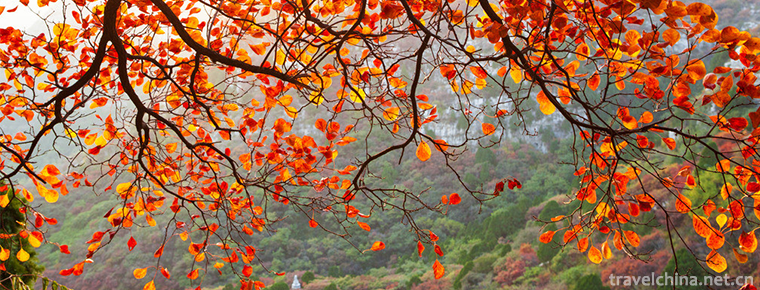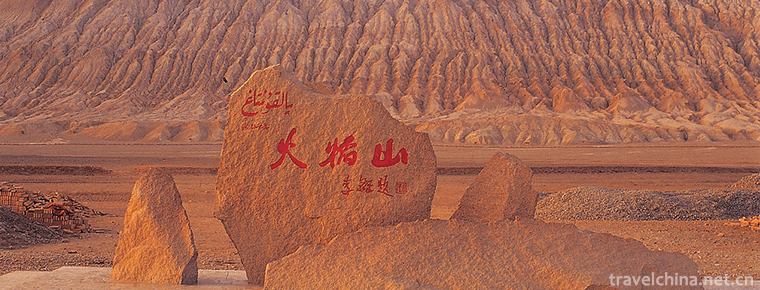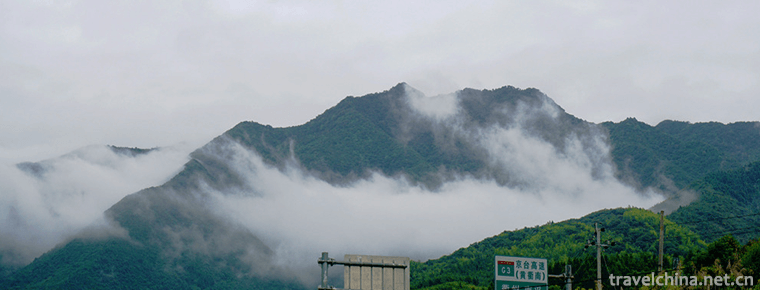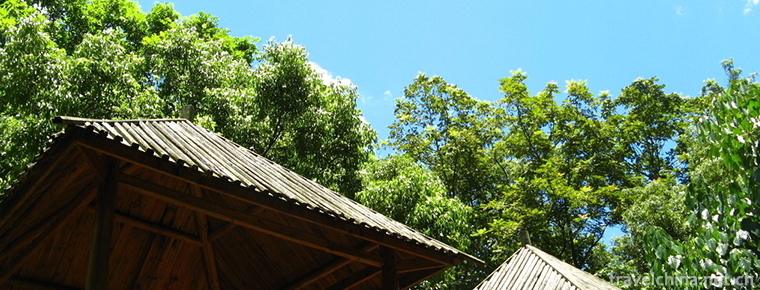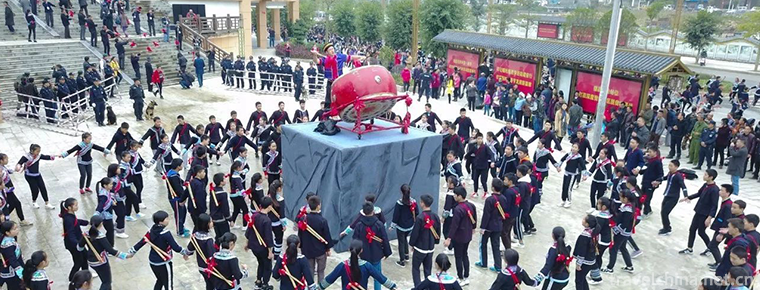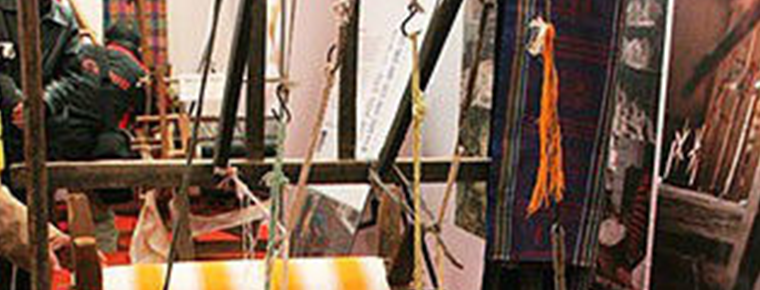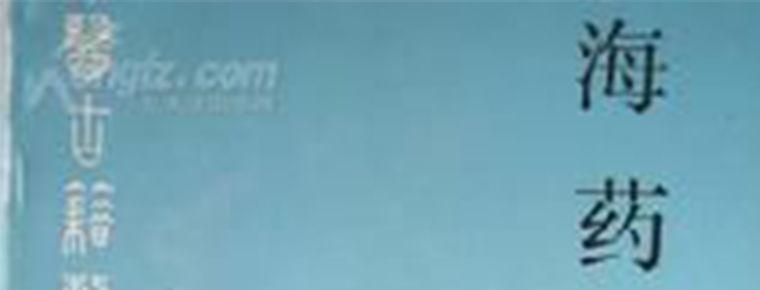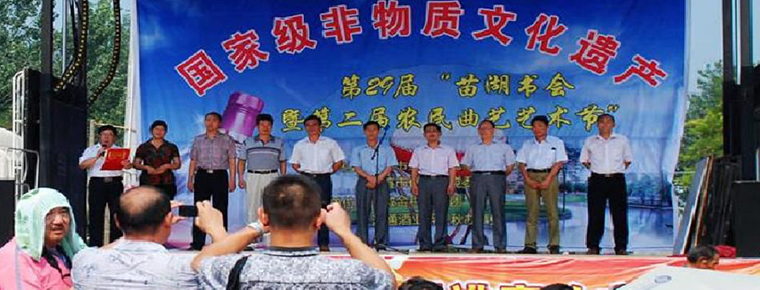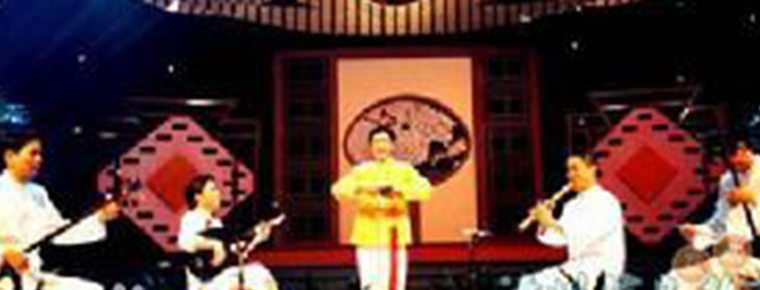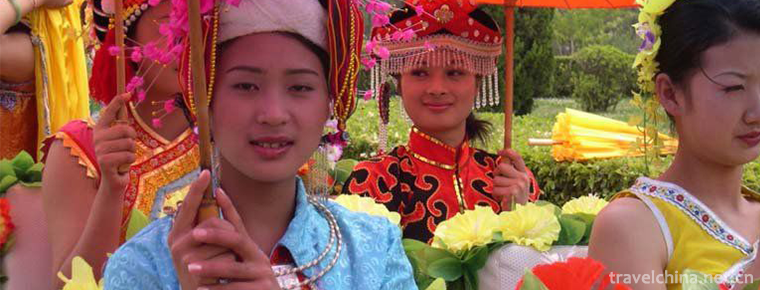Shuoguzi
Shuoguzi
Shuoguzi, also known as Jingzhou Shuoguzi, is a kind of traditional folk music in Hubei Province. It mainly talks, sings in the middle, beats drums and tells stories, accompanied by suona. It is popular in Songzi, public security, Shitou, Jianli and other places. Old artists believe that "speaking drum" is derived from the words of Yuan and Ming Dynasty. It is mainly popular in Shishou, Songzi, Public Security, Jianli and other counties in Jingzhou, Hubei Province.
On June 7, 2008, the "Shuoguzi" jointly declared by Public Security County and Songzi City of Hubei Province was listed in the second batch of national intangible cultural heritage list with the approval of the State Council. Heritage serial number: 779 V-86.
historical origin
Said Guzi Hubei Opera, also known as "Jingzhou Said Gu". It is popular in Shishou, Songzi, Public Security, Jianli and other counties in Jingzhou, Hubei Province, and also in Hunan counties near Shishou.
Legend has it that drums originated from opera music and were formed in Tongzhi period of Qing Dynasty. Early artists were accompaniers of Chinese and martial arts scenes in theatres. When they could not perform, they often gathered in three or five years and sold their art by solfeggio. Later, it gradually changed to singing alone. One person mastered four instruments: Suona, drum, single cymbal and waking wood. Most of them were singing at the invitation of farmers after the Spring Festival and the autumn harvest. Later, some traveling artists appeared to rap along the door, eliminating the single cymbals and waking wood. In addition to the one-legged class, there are also two or three performers who play drums and rap, play suona accompaniment, and give interjections or answers.
artistic characteristics
Singing drums are often "like singing like talking, like talking like singing, like talking like singing, there are boards in rap, lines and tunes". It is called "upper rhyme cut, lower rhyme guide (can change rhyme)" that the drums are used to transit to another paragraph. Segmental sentences are four, six, eight, ten and so on. The Tao Bai of the drum is divided into "Sanbai" and "Yunbai", "Sanbai" belongs to prose style of reading, also known as "Shuobao"; "Yunbai" has a certain rhythm and format, with seven-character sentences, as well as "May, May, May and July" sentences.
Talking about drums can be adapted from operas and romances, can sing folk tales, and can also sing jokes and funny stories in society. Its music melody is close to spoken language. In its tune, the tune is interesting and lively, and the rhythm is distinct.
Singing tunes are mainly composed of "Xianglian" and "prodigal son". The singing tunes are usually composed of two phrases, the upper and the lower, which are flexible and free in singing. In the past, drums were usually written by one person, accompanied by a suona. Folk music accompaniments such as erhu, Pipa and Yangqin were added.
Saying drums is mainly about speaking while singing. It usually ends with two singing tunes after a rhythmic speech, which is called "singing shake". Singing requires "like singing like talking, like talking like singing, like singing with a board, according to the word line tone." Singing tunes are divided into four categories: Xianglian, prodigal son, Huaqiang and Guogang. Among them, "Guogang" is formed by absorbing the music of the local opera "West Flower Drum", "Huaqiang" includes traditional folk minor tunes such as "flying kites", "beating pork grass", "asking for money", "Lotus Flower Noise" and "Seven-fold Zi". In addition, there are also "troupes" and other pieces playing the brand song. The representative traditional repertoires are "Mount Mangdao", "Wang Xier herding cattle", "White T-shirt", "Double New Year's greetings", "Fuqin Ji" and so on.
Talking about drums is divided into "loose" and "rhyme". "Sanbai" belongs to prose style, also known as "Shuo Biao", "Yunbai" has a certain rhythm and format, there are seven-character sentences, there are also "five, five, seven and five-character" sentence patterns.
Art School
Gongan shuogu
Gongan shuogu were the first provincial intangible cultural heritage in Hubei Province. Public security drumming has a long history. From the literary form point of view, it is in line with the Tang Dynasty variants, because "Dunhuang variants" are the pioneers of all kinds of rap and singing literature in later generations. By the Song Dynasty, rap art flourished, and many forms of rap emerged. Guzi Ci was a popular form of folk art at that time. After the Song Dynasty, Guzi Ci changed several times. After the Yuan and Ming Dynasties, "Ci Hua", it gradually developed and evolved into "Gongan Shuo Gu" in the late Ming and early Qing Dynasties. From the Qing Dynasty to the Republic of China, the public security drum-telling has been further developed. The number of drum-telling artists has been increasing, the repertoire has gradually increased, and the content has become increasingly extensive and rich. Public security say drum, also known as public security say drum. Give priority to speaking while singing. That is to say, the tone of local dialects should be moderately exaggerated, with ups and downs, with charm, rhythm, fast but not disorderly, slow and continuous, articulation clear, hierarchical. Singing is usually clipped at the end of each paragraph. Often, after a rhythmic speech, it ends with two singing sentences. After closing, it repeats the melody of the next sentence with a suona, beats a drum, and then starts the next paragraph. The music of public security drumming is divided into two parts: singing tune and suona. Singing tunes can be divided into three categories: main tune, flower tune and crying tune. The traditional repertoire of public security drum-telling is rich in content and wide in subject matter. One is based on street talk, trifles and jokes; the other is from traditional folk legends; the third is from martial arts and historical romances; in addition, there are also transplants from local operas and foreign operas. Public security drums are accompanied by drums and suonas, which are rich in local flavor, expressive and have unique local flavor and artistic characteristics. Public security drums are formed in the folk, developed in the folk and popular in the folk, so they have the value of folklore. The music of public security drumming is divided into singing tunes and playing cards, which have strong local style. After centuries of accumulation and evolution, a lot of fixed music cards have been formed, which has the value of music research.
Songzi Says Drum
Historical Evolution
According to the existing data, Songzi Shuoguzi, originally known as "Shuo Gushu", evolved from "Ci Hua" in Yuan and Ming Dynasties, and gradually formed a traditional folk rap form. During the Tongzhi period of the Qing Dynasty (around 1862), it began to be popular in Dayanzui, Xizhai, Jiehe City and Paper Mill River in Songzi. Drum artists make a living by talking and singing along the door. Initially, only one person played drums and talked without singing or accompaniment. Because of the impact of simple storytelling, it is declining day by day. Just in time for the northward movement of Suona to the south, Zhao Chengyun, a storyteller, cooperated with Jiang Xuexin, a Suona performer, to transform the form of storytelling. Tangmu was replaced by Tanggu, and a line or two was added at the end of the commentary. Suona was accompanied by a line or two at the end of the commentary. It was novel and unique, making the form of expression more flexible and gradually developed into two-person singing: 1. People play drums and storytellers, while one plays suona accompaniment, and interrupts with the storyteller to answer questions. Suonaqu cards include "wave of water", "six-character tune" and "compassion". Music can be divided into two categories, namely, playing brand songs and singing tunes.
Gushu rap has undergone considerable changes through successive generations of artists'inheritance and continuous improvement. Especially after the founding of New China, through the unremitting efforts of music artists, rap and even performance accompaniment instruments have been further reformed, rhyme and vernacular use of local southern dialect, with emphasis on both rap and singing; music absorbs part of Songzi folk songs; accompaniment in addition to Suona, but also increased orchestral, plucked instruments. It integrates singing, music and drum beating into a unique style of traditional folk art, which is well received by the masses and widely spread in the border areas of Hunan and Hubei, especially in Songzi.
Classic repertoire
Songzi said that the drum repertoire is rich and colorful, and the captain is magnificent. Street talk, folk anecdotes, imperial generals and prime ministers, talented people and beautiful women, dramatic stories, myths and romances, wind, snow and moon, humorous jokes, life sufferings and so on are all-embracing.
Such as the Golden Golden Horse, the magnificent "Great War Hongzhou"; the plaintive, resounding "Liuyin Qiyuan"; the virtue, loyalty and filial piety, tear-provoking "Peacock flying southeast", the "Qingfeng Pavilion"; the heartening, interesting "Wangzi Chenglong" and so on. In addition, there are a number of works reflecting different historical stages, such as "Cattle Raising", "Son-in-law", "Red Matchmaker", "Housekeeper in the Shancun", "Now Lao Wang is popular" and so on.
Basic characteristics
Songzi said that the drum repertoire is basically composed and sung by the performers themselves, and the theme selection is also based on the preferences of the performers. Generally speaking, the repertoire is sung for about 10 minutes, and the performers perform according to the content of the repertoire with voice and body.
representative figure
The most representative figure of Songzi's "Saying Drum" is Shen Xingya. His greatest contribution lies in the innovation of music (orchestra) and accompaniment instruments, thus injecting new vitality into traditional music.
He has created more than 40 performances in his life. His representative works include "Striking Tigers Up Mountain", "Barefoot Doctors Learn from Groups", "Aunt Thrifty", "Watching Aunts", "Lao Du" and "Little Accompanies Talk". Some performances have participated in national opera tunes, some have been recruited by provincial radio stations, and some have won the first prize in provincial level.
Inheritance Significance
Saying drum is popular in Songzi, Public Security, Shishou and other counties and cities. It is a popular form of folk art with strong expressive force, but few people can sing it. Although it has been selected as a national intangible cultural heritage project, its inheritance is still a big problem.
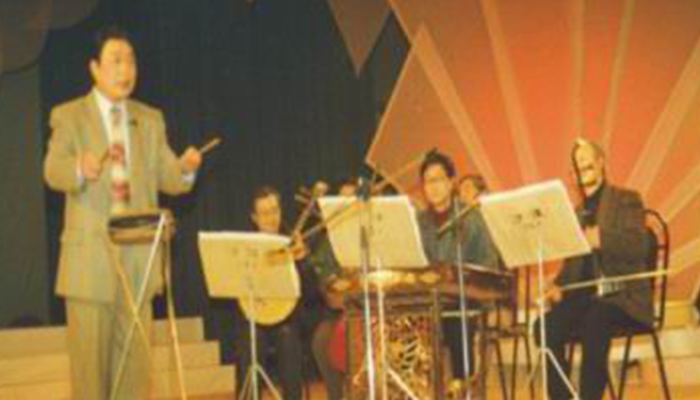
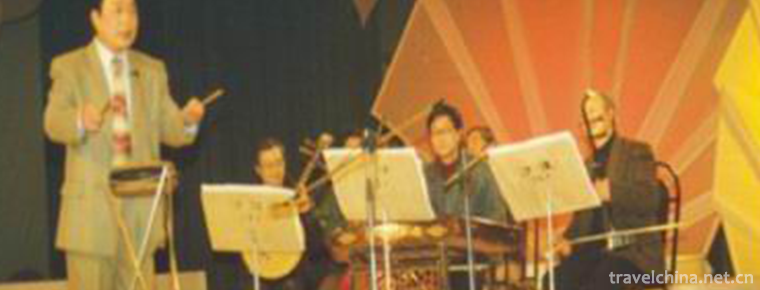
Shuoguzi
-
Lujiazui
Lujiazui is located on the Huangpu River in Pudong New Area, Shanghai
Views: 198 Time 2018-10-12 -
Red Leaf Valley Eco cultural Tourist Area
Red Leaf Valley Eco-cultural Tourist Area, National Key Scenic Spot, National AAAA Class Tourist Spot. Red Leaf Valley is located in the southern mountain area of Jinxiuchuan Township
Views: 223 Time 2019-01-16 -
Flaming Mountains
Flame Mountain in Xinjiang is the most famous scenic spot in Turpan. Located in the northern margin of Turpan Basin, the northern route of the ancient Silk Road is mainly composed of red sand
Views: 350 Time 2019-01-19 -
Jianglangshan 28du Tourist Area
28du Town, located in Jiangshan, Zhejiang Province, is a famous historical and cultural town. It is a writer's creation base in Zhejiang Province. It is located at the junction of Zhejiang,
Views: 215 Time 2019-01-21 -
Liangfengjiang National Forest Park
Liangfengjiang Forest Park is the earliest national forest park in Guangxi approved by the Ministry of Forestry, covering an area of more than 70,000 mu. Located in the southern
Views: 201 Time 2019-01-30 -
Buyi Peoples Changing Dance
The Bouyei people, who can sing and dance well, have created colorful Bouyei culture. Buyi people like singing and dancing to express their feelings whether they
Views: 131 Time 2019-04-04 -
Tibetan folk songs
Tibetan folk song is a magnificent flower in Tibetan folk literature, with profound ideological and high artistic quality. Throughout the development process of Tibetan folk songs
Views: 237 Time 2019-04-15 -
Traditional Cotton Textile Techniques
Chinese traditional textile technology has a long history. Since cotton was introduced from India in the 7th century, Chinese textile industry has changed from linen to cotton.
Views: 242 Time 2019-04-19 -
Hui Nationality Medicine
Hui medicine is the product of the combination of Chinese traditional medicine and Arab-Islamic medicine. Arabs began to develop science and culture when other European countries had not yet separated
Views: 329 Time 2019-05-04 -
Jieshou Book Club
The first book of the world will be a national list of intangible cultural heritage. Miaohu Book Club in Jieshou City is a unique bonsai project in its culture and art.
Views: 140 Time 2019-05-06 -
Brocade song
Brocade song, formerly known as Gezi or Shijin song, is also called begging tune. It was named Jinge in 1953. This is a form of singing accompanied by instrumental music.
Views: 347 Time 2019-05-07 -
Nu Fairy Festival
Fairy Festival is a traditional folk festival of Nu people in Gongshan area of Yunnan Province. The local flower festival, also known as the Flower Festival, is held on March 15 of the lunar calendar
Views: 312 Time 2019-06-08

